| Back to Back Issues Page | |||||||
 |
|||||||
|
Hello Welcome to In the Moment with Thoracic Mobility on a Foam Roller! September 27, 2013 |
|||||||
In the Moment with Thoracic Mobility on Your Foam Roller!
|
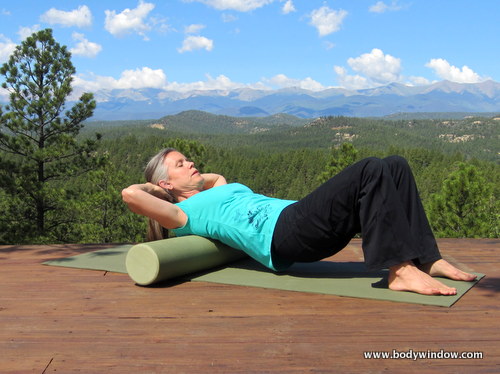 Starting Position for Thoracic Spine Foam Rolling |
Lie back on the foam roller as shown in the start position. Place your hands behind your head and lift your hips off the ground. Begin rolling slowly up and down the mid-back area. Use your feet to push off. Your feet also will keep you grounded and balanced. If it is too hard to put your hands behind your head, try placing them on your belly, or on the ground next to you.
Remember to breathe as you roll. Never hold your breath! Your back may crack, and that is OK. Do this as long as you wish. It should feel really good as you loosen and warm up your back.
Next, try rooting your feet, with your hips still up and the roller at your shoulder blade level, and lean back so that your head and arms are
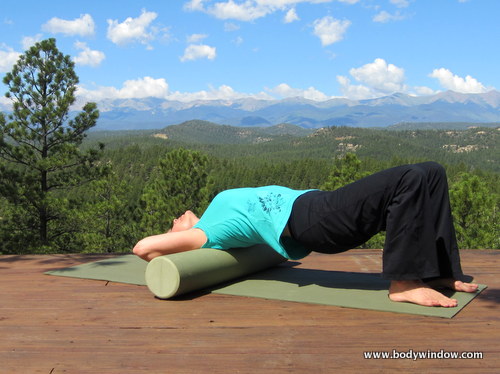 Foam Rolling the Thoracic Spine |
Now try the same mini sit-up exercise as above, but this time, lower your hips to the ground. While the hips provide more stability, the back bend is deeper, getting into the upper spine much more deeply.
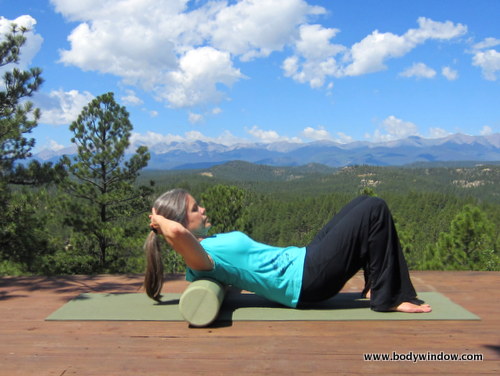 Thoracic Mobility Starting Position |
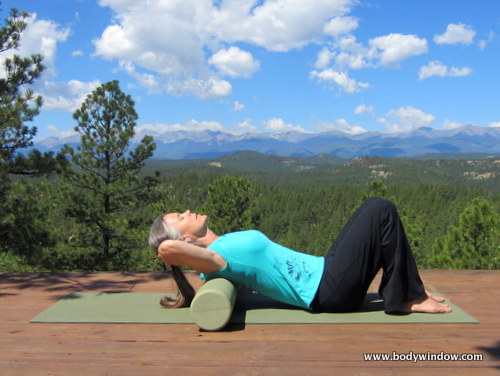 Deeper Back Bend with Hands Behind Head. |
You can experiment in this position like before, from a lower or higher point on your spine. Don't forget to keep breathing, sinking into the foam roller and releasing. As you inhale, elongate your spine. As you exhale, sink a little farther if you can.
As a final movement in this position, try extending your arms over your head as shown. Keep inhaling and elongating, exhaling and extending and releasing. Hold this for as long as you wish, but try to do it for at least 3-5 breaths. The longer you hold, the more releasing can be accomplished.
If you wish, you can slide your legs farther out, or even straighten them. There is really no "perfect" way to do this exercise. Just follow your own body's intuition.
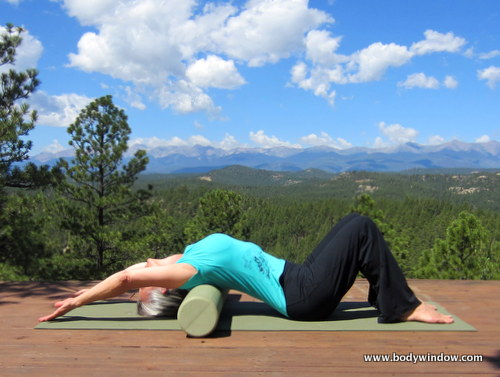 Back Bending on the Foam Roller with Arms over the Head. |
From the arms over the head position, sit up just a bit and lower the one arm by your side as you keep the other over your head. A mild twisting motion at the upper back is required to make this movement. This frees up even more space in your thoracic spine as you add the twist. Hold this here for 3-5 deep breaths.
Make sure you do both sides equally for balancing your body!
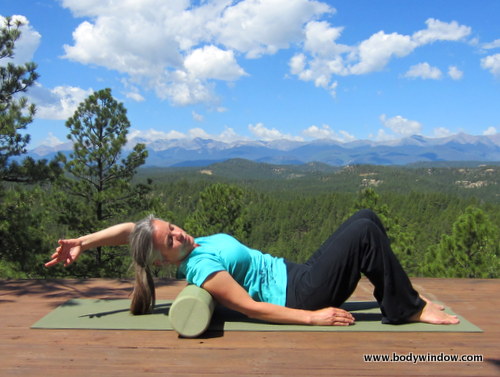 Back
Bend with a One-Arm Twist |
For the final spinal mobility movement, go back to the starting position with your hands behind your head, hips down on the floor. Take a long inhale. As you exhale
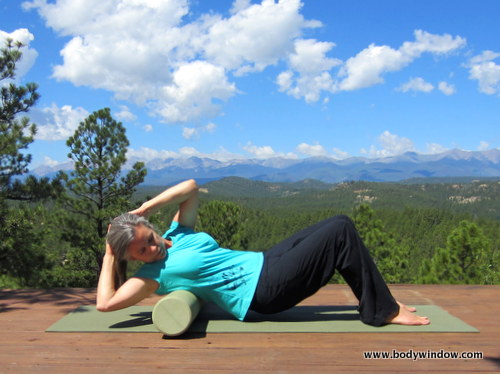 Thoracic
Mobility, Hands Behind Head with a Twist |
Repeat on the other side. Do several repetitions to loosen your thoracic spine even more!
An added benefit to these exercises, is that it works your core, opens your chest, and requires balance to perform, all in addition to opening your thoracic spine! What a wonderful combination of body-mind-soul activity.
As you do these foam roller exercises, allow your worries and hurts to just roll off your back! You may wish to say affirmations, for releasing your burdens, such as:
- I release my burdens and I feel free!
- My troubles roll off my back!
- God/the Universe support me in all things!
- My back supports me always in everything I do!
- I release my financial worries!
- I release my emotional and physical worries!
- I feel strong, straight and tall!
Feel free to create your own affirmations that have meaning for you, as your heart is opened with these exercises. Make them meaningful to you! You may also wish to explore your 4th Chakra energy, that energy center that is involved with this part of the body.
Join me, in purchasing your foam roller today and roll away your bad posture! I recommend the premium Life Fitness model, especially if you are a beginner to foam rolling. It has more cushion and comfort!
May you always breathe and release as you roll away your tensions and hurts, on your foam roller!
